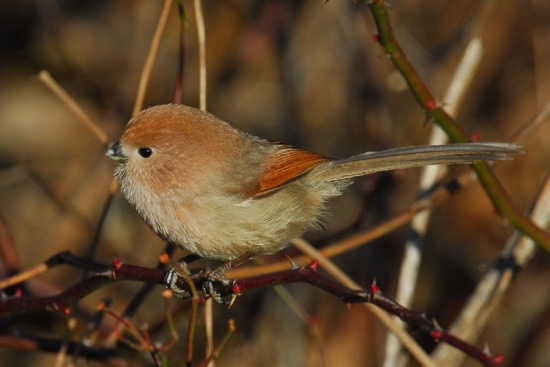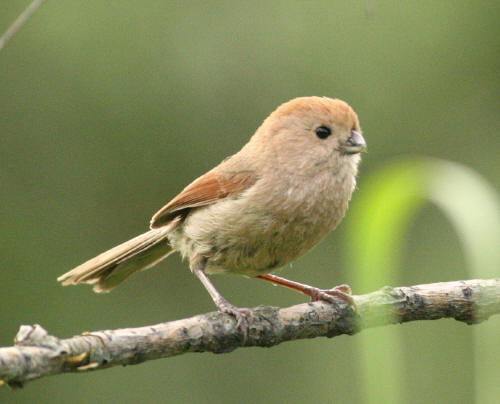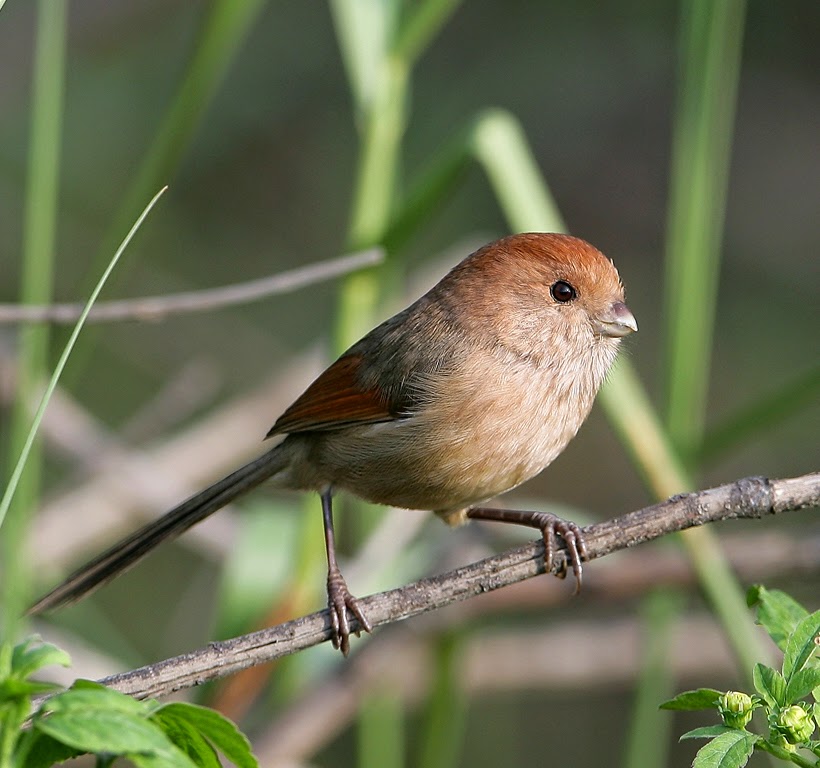
Paradoxornis webbianus
SUBFAMILY
Paradoxornithinae
TAXONOMY
Suthora webbiana Gould, 1852, Shanghai. Seven subspecies.
OTHER COMMON NAMES
English: Rufous-headed crowtit; French: Paradoxornis de
Webb; German: Papageischnabel.
PHYSICAL CHARACTERISTICS
5 in (12 cm). Tiny, long-tailed, brownish bird with rufous accents,
finch-like yellow bill, and dark eyes. Sexes similar.
DISTRIBUTION
Greater portion of eastern China, north to southeastern
Siberia, south to northeastern Myanmar and northwestern
Vietnam, as well as Korean Peninsula and Taiwan.
HABITAT
Summer: undergrowth of mixed conifer and broad-leafed secondary
forest. Winter: grassy hillsides, reed beds, thickets,
farmlands.
BEHAVIOR
Some populations migrate south, most only change habitat in
winter. Flocks usually contain about 10 birds, may include up
to 80. Continuous contact calls. Noted for great agility among
dense vegetation.
FEEDING ECOLOGY AND DIET
Continuously forages through vegetation in flocks for seeds,
insects, spiders, and occasionally cultivated grain.
REPRODUCTIVE BIOLOGY
Monogamous. Male constructs outer framework of deep bowlshaped
nest of grass and various fibers, in small trees, bamboo,
dense grass, or thickets. Female assists in lining with moss,
cobwebs, hair, etc. Thirteen-day incubation of 3–5 blue-green
or white eggs shared by parents.
CONSERVATION STATUS
Not threatened. habitat may have expanded through recent
human activity. Recent massive commercial exportation from
China ended by ban in 2001, though shipments may arrive
from Siberia.
SIGNIFICANCE TO HUMANS
May pose minor threat to millet, sorghum, wheat, and rice.
Continuous acrobatic activity has made it a popular traditional
cagebird in China and Japan. Before the 1949 Chinese Revolution,
males popular for wagered bird fights.
Photo Gallery of - Vinous-throated parrotbill




 Animalia Life
Animalia Life